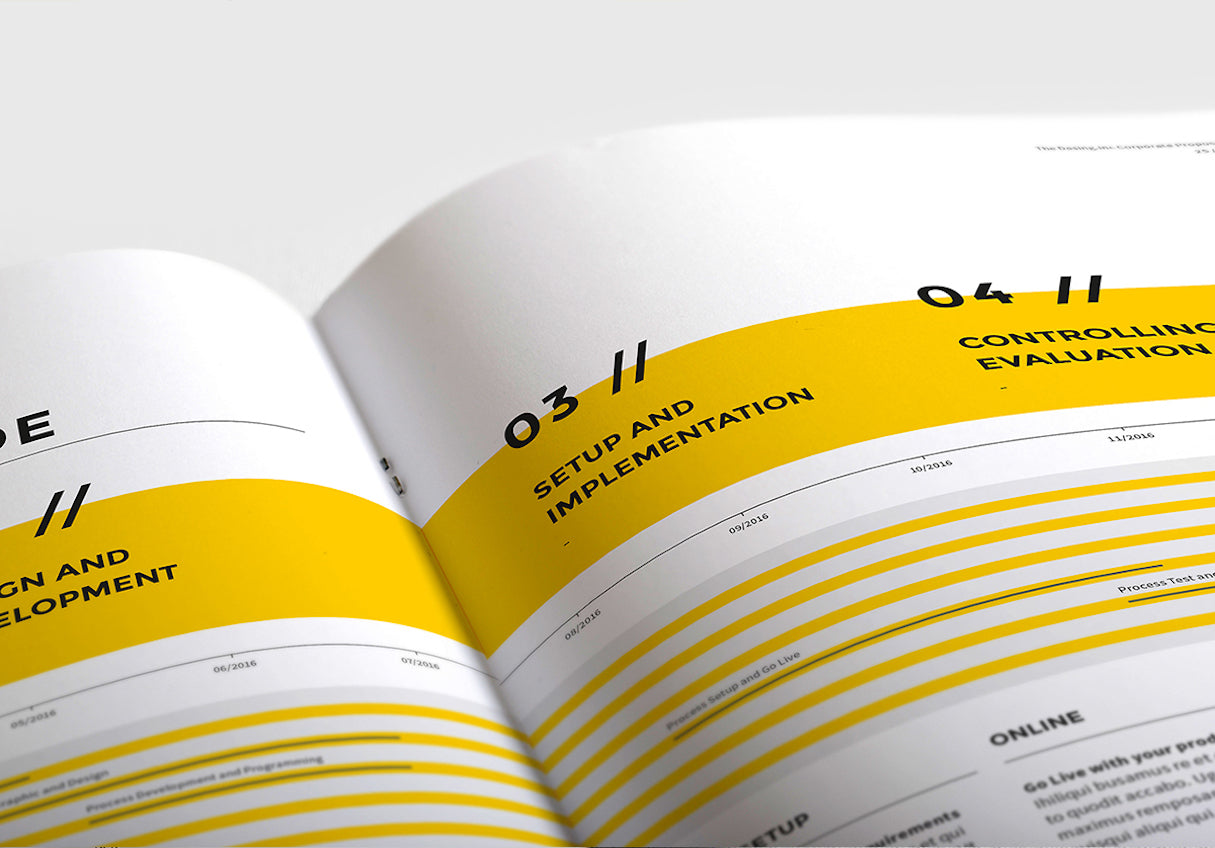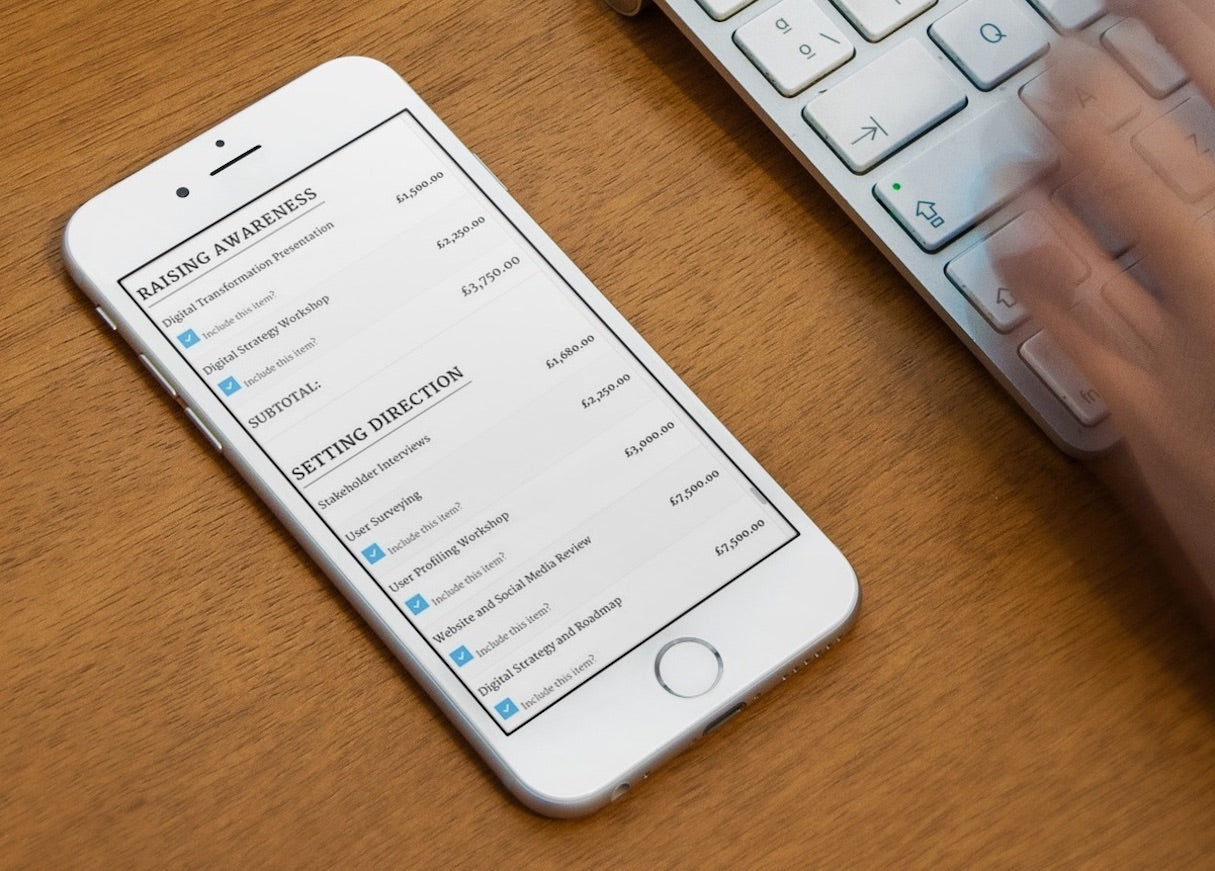Writing proposals is a necessary evil for selling digital services. But even when we win projects, our proposals often fail us. Fortunately, there is a better way.
I spend a lot of time thinking about proposals, partly because I have to write them myself, but also because I work with clients to create them. There are the agencies I mentor, and the internal teams who have to put together business cases for management.
I am always on the lookout for tools and techniques to make the process of proposal writing quicker and more straightforward. That might be proposal writing apps like Proposify or advice from people like Blair Enns.
After years of tweaking and refining, I finally feel confident that proposal writing doesn’t need to be as difficult as we make it.
Why proposal writing feels so onerous
Let’s be honest—writing proposals sucks. It takes far too much of our time. That is time that is not chargeable, and we could spend it better building stuff.
If we are not writing our carefully crafted content, we are digging through old proposals trying to find copy to reuse. Copy, paste, edit. Copy, paste, edit.
"Writing proposals sucks. It takes far too much of our time—time that is not chargeable, and we could spend it better building stuff."
Then, of course, we have to make our proposals look good. That means moving our copy into a package like InDesign to add styling and imagery.
After all that, a good number of our proposals get rejected. Or even worse, you don’t hear back from the client. Have they actually looked at it?

Even if we win the work, we then need to turn our proposals into a contract and get it signed off by the client.
There has to be a better way!
You might also like: The Statement of Work: How to Move Past Proposals and Win More Clients.
The dream proposal process
Of course in an ideal world, we wouldn’t have to write proposals at all . That isn’t going to happen, but things could be a lot better than they are. For me, a dream proposal process looks something like this.
. That isn’t going to happen, but things could be a lot better than they are. For me, a dream proposal process looks something like this.
- I can assemble the rough edit of a proposal from chunks of content I have written before, all without searching old proposals and pasting content.
- I can quickly customize that content to suit the specifics of the project.
- The final result looks stunning without lots of work messing around in a design package. Design packages are better suited to the needs of a professional design project than a simple proposal.
- The final result is so compelling clients are less inclined to look elsewhere for competitive quotes.
- I know if the client has read my proposal, allowing me to manage the follow-up process better.
- The proposal can also act as the contract, making the approval process as straightforward as possible.
Is that so much to ask! You may think so. But I think we can get a hell of a lot closer than we are.
A big part of making the dream a reality is to use the right tool for the job. We need to stop using Word and InDesign. The developers of these tools did not create them with proposal writing in mind.
Use the right tool for the job
Luckily there is a new generation of proposal writing software that is much better suited to the job. I use Qwilr, but there are similar apps out there like Proposify or PandaDoc. These apps have many features that make the dream much closer to reality.

For a start, they all allow you to reuse content. Instead of digging through old proposals, you have a library of reusable content that you can drop in with a click of a button. Some of these apps will even add the client name and other relevant data to these reusable content blocks automatically. That saves you from the embarrassment of adding the wrong client name to the incorrect proposal.
Second, these apps put your proposal online (with an associated PDF download in most cases). That means that they can track when a user opens the proposal and which parts they look at. No more guessing when a good time to follow up is. No more wondering if the client has even bothered reading your proposal. And best of all, you can see which parts of a proposal has caught their interest.

Third, these tools also allow clients to sign off on the proposal, turning them into contracts. That saves a load of hassle.
Forth, many of the apps allow you to make the proposals interactive, giving the client the chance to customize the deliverables based on their requirements. They select the components they want, and then sign off right there online.

Finally, these tools let you create professional looking proposals . That is another area where online proposal creators are head and shoulders above the competition. These proposals are mini-websites and look stunning. You can also add video and even iframe content. You can't do that in a printed document!
. That is another area where online proposal creators are head and shoulders above the competition. These proposals are mini-websites and look stunning. You can also add video and even iframe content. You can't do that in a printed document!
You might also like: How to Avoid Messing Up That Crucial Pitch Meeting.
Make your proposal proportion to the brief
But it is not all about the tool. We often make proposals far more verbose than they need to be. Blair Enns suggests that a proposal should never be more than a single page. I think that is a bit ambitious, but I agree with the sentiment. Write as little as possible. Don’t waste time on a document that many will only skim read (I have seen the analytics, they do just skim read).
I suggest making the length of your proposal proportional to the brief you receive. If you receive a short email brief, respond in kind. If the client sends you a detailed invitation to tender, then your response should be more comprehensive.
Always offer three options
One last thing I would suggest is always to offer three options. This is valuable for a couple of reasons.
First, people like choice (but not too much). It gives them a sense of control and ownership. Second, it helps to frame your offering.
We only know the value of something by comparing it to something else. If you offer three options, people can compare those options to each other. But if you only have one offering, they have to look elsewhere to judge its value. That is where you will get sucked into a competitive tendering process.
"If you only have one offering, they have to look elsewhere to judge its value. That is where you will get sucked into a competitive tendering process."
So to discourage comparing you to your competition, offer three options. Have a budget option, an expensive option and one that you pitch in the middle. You may never sell the cheap or costly options. But they will make the middle one look like excellent value for money!
Make proposal writing easier
There is so much more that I could say about proposal writing, but you would be amazed at how even these simple changes to your process will make a world of difference.
Ultimately it is about getting the best conversion rate for the minimal investment. Having a streamlined process that allows you to turn around quality proposals for minimum effort should be the goal, and the recommendations in this post will go a long way to making this happen.
Read more
- The Ecommerce Proposal Guide for Shopify Experts
- 3 Project Management Strategies to Prevent Scope Creep
- 6 Questions to Help You Gauge Client Fit
- How Shopify Plus Partner Createur Helped Migrate One of Australia’s Top Online Retailers
- The Importance of Investing in Your Own Website
- Why You Should Specialize in Ecommerce Design
- The Profitable Ecommerce Designer
- How to Host a Webinar That Attracts Clients
- How to Write a Business Email Prospective Clients Will Never Forget
How have you made your proposals better? Let us know in the comments below!



